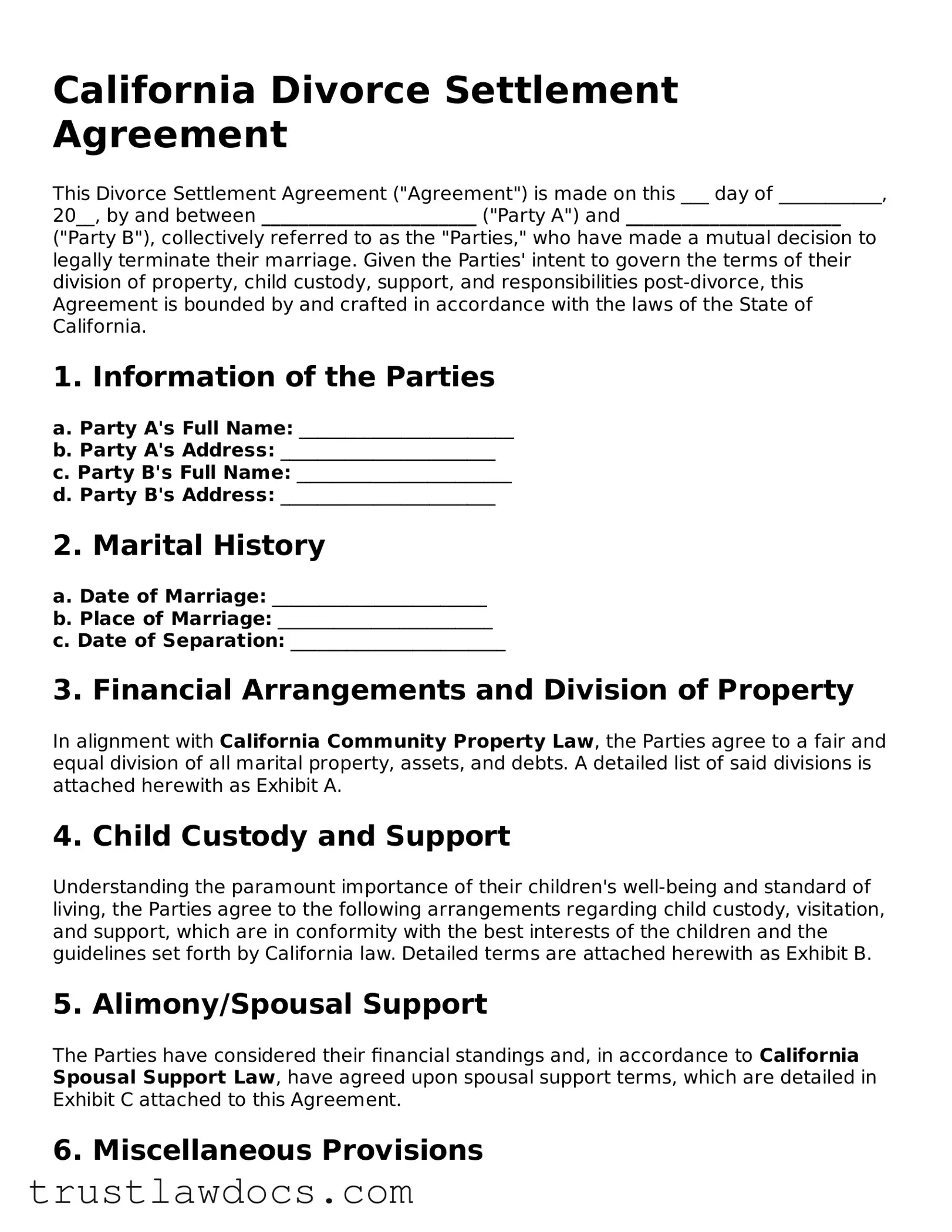California Divorce Settlement Agreement
This Divorce Settlement Agreement ("Agreement") is made on this ___ day of ___________, 20__, by and between _______________________ ("Party A") and _______________________ ("Party B"), collectively referred to as the "Parties," who have made a mutual decision to legally terminate their marriage. Given the Parties' intent to govern the terms of their division of property, child custody, support, and responsibilities post-divorce, this Agreement is bounded by and crafted in accordance with the laws of the State of California.
1. Information of the Parties
a. Party A's Full Name: _______________________
b. Party A's Address: _______________________
c. Party B's Full Name: _______________________
d. Party B's Address: _______________________
2. Marital History
a. Date of Marriage: _______________________
b. Place of Marriage: _______________________
c. Date of Separation: _______________________
3. Financial Arrangements and Division of Property
In alignment with California Community Property Law, the Parties agree to a fair and equal division of all marital property, assets, and debts. A detailed list of said divisions is attached herewith as Exhibit A.
4. Child Custody and Support
Understanding the paramount importance of their children's well-being and standard of living, the Parties agree to the following arrangements regarding child custody, visitation, and support, which are in conformity with the best interests of the children and the guidelines set forth by California law. Detailed terms are attached herewith as Exhibit B.
5. Alimony/Spousal Support
The Parties have considered their financial standings and, in accordance to California Spousal Support Law, have agreed upon spousal support terms, which are detailed in Exhibit C attached to this Agreement.
6. Miscellaneous Provisions
- Entire Agreement: This document and any attached exhibits constitute the entire agreement between the Parties and supersede any prior understanding or representation of any kind preceding the date of this Agreement.
- Amendments: Any amendments to this Agreement must be in writing and signed by both Parties.
- Governing Law: This Agreement shall be governed by and construed in accordance with the laws of the State of California.
7. Signatures
By signing below, the Parties acknowledge they have read and understood all terms and conditions of this Agreement and that they agree to be legally bound by them.
Party A's Signature: _______________________ Date: ___________
Party B's Signature: _______________________ Date: ___________
Exhibits
- Exhibit A - Division of Property, Assets, and Debts
- Exhibit B - Child Custody and Support Agreement
- Exhibit C - Alimony/Spousal Support Agreement
